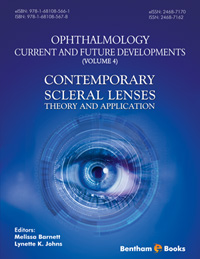Abstract
Scleral lenses have become a mainstream option for the treatment of distorted corneas and ocular surface disease. Well-fit scleral lenses vault the cornea and are supported entirely by the sclera. They create a tear layer reservoir which helps neutralize an irregular, damaged or diseased cornea while creating constant lubrication and necessary oxygen supply. They provide optics comparable to corneal gas permeable lenses, with equivalent comfort to soft contact lenses. Like any type of medical treatment, there must be first and foremost an understanding of the disease process and pathology being treated when fitting scleral lenses. Without true understanding of the disease process and its limitations, practitioners may inadvertently induce complications. A comprehensive understanding of the intended scleral lens design and fitting parameters is paramount. Equally important is establishing a close relationship with the lens manufacturing laboratory and their consultants. This is particularly critical when troubleshooting challenging cases. Establishing appropriate scleral lens follow up and close communication with the referring corneal or medical specialist is very important. Proper understanding of the disease process and its limitations are important to avoid scleral lens induced complications. Appropriate follow up and adequate collaboration with specialists is also essential to ensure successful treatment with scleral lenses. From the care and handling aspect as well as disease management strategies, patient communication and involvement can improve compliance and favorable outcomes.
Keywords: Abrasion, Application, Comfort, Corneal abrasion, Corneal Neovascularization, Edema, Fogging, Graft Rejection, Hyperemia, Impression ring, Injection, Keratitis, Neovascularization, Non-wetting, Pain, Problem Solving, Prolapse, Redness, Removal, Visual Acuity.






















